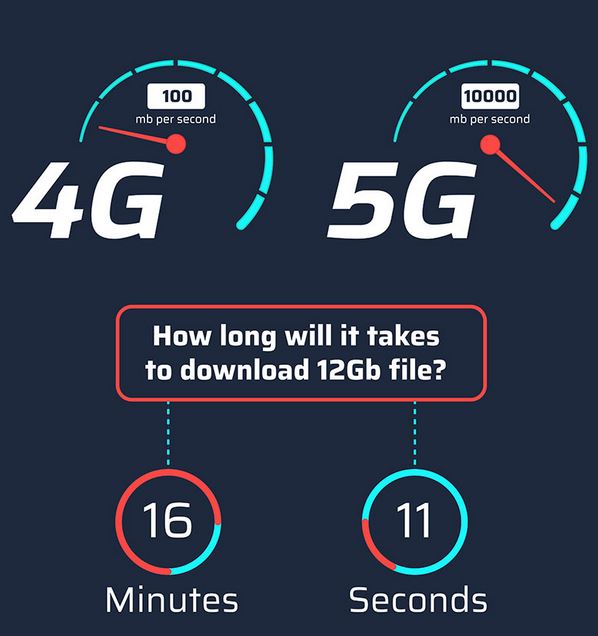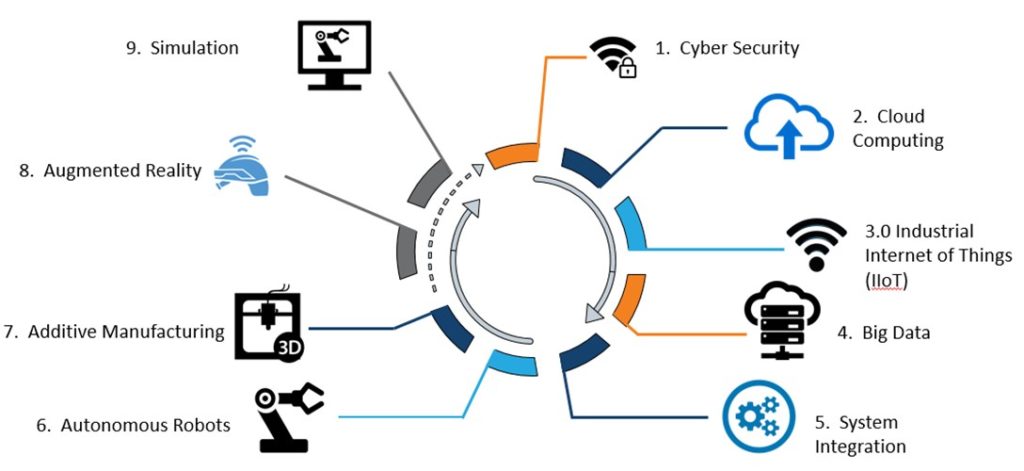As I mentioned in the original Industry 4.0 blog, nine key enablers support Industry 4.0 or Smart Manufacturing. I list the nine key enablers below. One key element that will be the backbone of the other enablers will be the adoption of 5G internet speeds.
The key enablers of Industry 4.0 include:
- Cyber Security/Blockchain
- Cloud Computing
- IIoT- Industrial Internet of Things
- Big Data
- System Integration
- Autonomous Robots-Cobots
- Additive Manufacturing- 3D printing
- Augmented reality
- Simulation/Digital Twins

The term 5G is very technical- not really- it means 5th Generation, but the advantages over 4th generation LTE (Long Term Evolution) will be tremendous. But first, let’s do a quick review of the Industry 4.0 enablers that 5G will support.
The technology that drives 5G internet speeds is based upon a different part of the electromagnetic spectrum called the millimeter spectrum. Think of these as very short wavelengths somewhere between the current cellular waves and microwaves or visible light. The higher you go up in frequency, the faster speeds you can achieve.
There are three elements that 5G hopes to solve:

1. Speed
This is an obvious advantage over current network speeds. We expect 5G to be 10-100 times faster than current cellular networks. Let’s say that you want to download an HD version of the latest Star Wars movie. This will be about 4GB of data. On a 4G LTE network that would take about 4 minutes. On a 5G network, you can watch R2-D2 in about 3 seconds.
2. Density
This refers to how many people or devices can be on a network. Imagine having sensors on all your equipment that are sending real-time data across the network. You might have thousands of sensors sending data within your factory at the same time and 5G will support that density.
5G has 10X more capability to handle connection density than LTE. I’m sure you have been to a crowded sporting event or concert. Trying to get a signal is impossible because of the number of devices trying to use the network at the same time. 5G systems will handle that density.
3. Latency
This refers to information lag. 5G speeds should ensure there is no delay in the information getting to you. Lag times should be in the 1-millisecond range, about the time it takes for a camera flash on your phone when taking a selfie. The information being reported should be real-time information, not delayed by many seconds.
This will lead to tremendous opportunities outside the factory walls. This is one of the main barriers that keep cars from operating in an autonomous manner today.
What if you needed brain surgery but you are in Colorado and the World’s best brain surgeon is in Singapore? Without latency, he could control a robot from Singapore to conduct your surgery in Colorado.
Some drawbacks of millimeter waves are that they do not do well with obstacles, and they do not travel very far. While this might be a problem for handling cellular phone demands, it should work well within a fixed environment such as a factory floor. Although it may require several antennas based upon the size of your building, the information captured and analyzed will be of tremendous use in understanding what is happening in your shop.
5G and its promise will ultimately be the backbone for the remaining nine Smart Manufacturing enablers.
As always, it is an honor to serve you and I hope that you and your company are getting better every day!
Follow me on Twitter
Join me on Linked In
Listen to the podcast episode here

